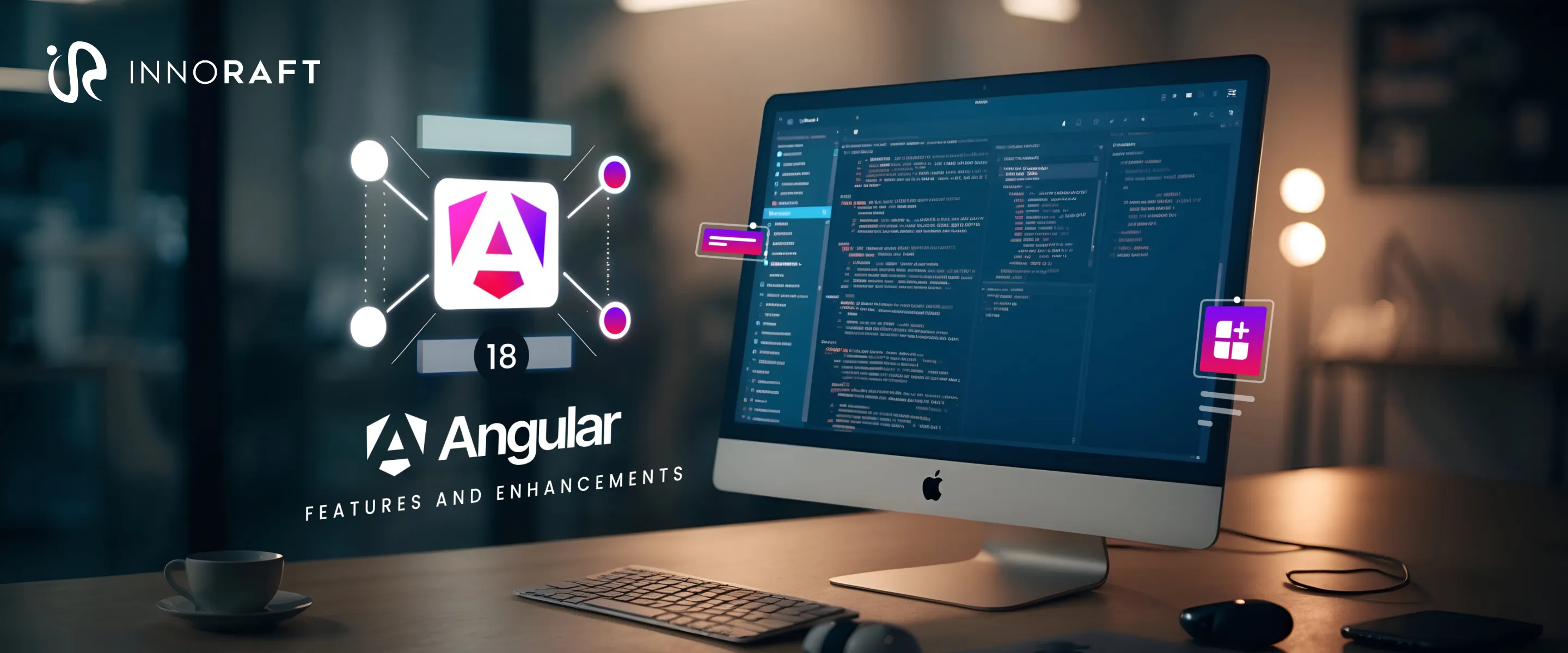The Angular framework continues to improve with each major version. Angular 18 arrived on May 22, 2024, releasing new features and improvements to this increasingly popular web development framework. The Angular team has always responded to feedback and pain points coming from developers, hence important changes were made in the examination in Angular version 18. It has placed a strong emphasis on enhancing speed, improving routing, and optimizing developer tools to ease the development process. This post provides a comprehensive evaluation of the Angular 18 enhancements, highlighting the developments that optimize the workflow and enhance the user experience. Let's explore the full potential of Angular 18 features and thrive in the web app development space.
Angular 18: What Is It About?
Upgrade to Angular 18 provides substantial improvements to state, data, and application logic flow. This version is quite precise, requiring developers to create boilerplate code. As a result, Angular 18 minimizes state complexity, allowing developers to better manage and maintain their applications.

Several noticeable changes exist, one of which is improved change detection, resulting in higher performance. The adoption of the new reactivity model makes updates easier to execute, resulting in quicker and more efficient applications. The Angular 18 update simplifies the process of employing state and data management, enabling developers to focus on their creativity rather than dealing with the complex nuances of maintaining state.
Why Angular 18 Matters?
Angular 18 enhancements continue to reinforce Angular’s position as an outstanding framework for creating robust, scalable, and maintainable web applications. Updates in Angular are made to adapt to the modern web development environment, and so is Angular 18. The Angular 18 update is a significant one, bringing more improvements in developer productivity, application performance, and user experience.
Angular 18 Features and Updates
Angular 18, with multiple improvements and advanced features, prioritizes enhancing existing strengths and executing performance optimization. Let’s tackle the essential subject of this guide and look at the latest Angular 18 features.
Zoneless Change Detection using Signals
One of the most notable changes to Angular 18 performance improvements is the inclusion of zoneless change detection using signals. Zoneless change detection is a more lightweight and efficient solution, which might lead to performance benefits in your applications. Signals, a new feature in Angular 18, function as observables that trigger change detection when their values change. This provides a more precise and reactive approach to managing application state updates.
Dynamic Route Redirects Using Functions
Route redirection is a prevalent feature in Angular apps. Angular 18 adds a new method for defining route redirects using functions. This enables more dynamic and flexible redirection logic. For instance, you may now redirect visitors based on their authentication status or other application parameters.
Enhanced Developer Tooling
Among the most substantial facets of Angular 18 is the enhanced developer tooling, which improves the developer experience. The Angular 18 update includes significant modifications to the Angular DevTools extension. It provides more information about dependency management, state changes, and application performance. These enable developers to debug quickly and optimize their code more efficiently. If you plan to upgrade to Angular 18, the performance improvements in tooling will make development easier.
Enriched Angular Material and Component Dev Kit (CDK)
Angular Material and the Component Dev Kit tools are required for creating uniform and accessible user interfaces in Angular applications. With the Angular 18 update, these libraries are aligned with the framework's core modifications, providing improved performance, stability, and compatibility. This makes the upgrade to Angular 18 much more advantageous for developers who utilize Angular Material for enterprise-grade UI design.
Server-Side Rendering (SSR) Performance Enhancements
Significant improvements in Server Side Rendering (SSR) performance have been made with Angular 18 for applications that need better SEO and quicker page loads. Event replay is one of those features; it synchronizes client-side and server-side interactions to produce a smoother transition that resembles native behavior.
Improved i18n Capabilities for Multilingual Support
To create apps for a global audience, robust internationalization support is essential. Angular 18 includes @angular/localize - a package that makes maintaining translations with appropriate date, currency, and number formats much easier for numerous regions.
TypeScript 5.4 Compatibility
The latest iteration of the widely used JavaScript superset, TypeScript 5.4, is supported by Angular 18. This implies that when creating their Angular applications, developers can leverage TypeScript 5.4's enhancements and new features.
Firebase App Hosting Enhancement
Apps utilizing hybrid rendering, such as client-side rendering, pretending, and server-side rendering, require distinct hosting needs. As a result, Firebase app hosting is launched to meet the requirements of developers. Firebase App Hosting, introduced at Google I/O and built with Angular, facilitates deployment and development. It supports Angular projects natively, connects effortlessly with GitHub, and works smoothly with Firebase features such as Authentication, Cloud Firestore, and Vertex AI, delivering a smooth and efficient development experience.
Additional Angular 18 Features
Aside from the significant enhancements, Angular 18 includes a few improvements that further simplify development and performance:
- Default Content in ng-content: This addition enables developers to specify backup content within 'ng-content' for cases in which no projected content is supplied.
- Better build performance: The Angular 18 update optimizes the build process, allowing developers to experience quicker compile times and more efficient workflows.
- WebAssembly support: Although currently in developer preview, WebAssembly support opens the door to new possibilities for performance optimization in Angular apps.
Conclusion
The Angular 18 features offer several good motives for upgrading your legacy apps or considering Angular for your next project. Angular 18 sets the stage for developers to build modern, scalable, and responsive web applications with improved speed, developer experience, and expanded capabilities for routing and internationalization. You can create new apps from scratch or update existing ones with Innoraft's support.
